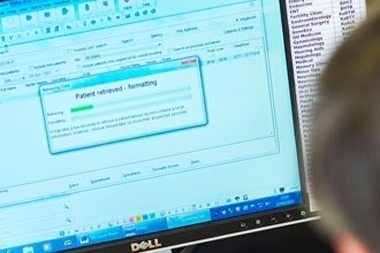The unplanned admissions DES is fiendishly complicated, with many practices missing out on the money because of unclear guidance. But how can you tell what you’re owed, and get it back if you’ve missed out?
What are the payment criteria?
Although the actual requirements of the DES have been simplified the coding is more complicated than ever. There are three different codes needed for a patient to be included and attract payment.
1. Admission avoidance started 8CV4
2. Named GP allocated (this must be entered after 1/4/14) 9NN60 – this is different to last year’s code.
3. Admission avoidance care plan agreed, reviewed, declined or review declined within 12 months. This code must be entered at the same time or after the latest admission avoidance started code.
None of these codes transfer across from other GPs with other codes – they must be entered anew at each surgery.
There is a payment for signing up and fulfilling the many other criteria of the DES. Twice a year there is a payment of 77.5p per patient for having 2% of patients over 18 years old and having a care plan.
What went wrong?
This year’s changes to the required codes have caught some surgeries unaware. There were two extractions for practices using the EMIS computer system. This was because the registration date was initially taken to be the most recent change of registration status but was later considered more appropriate to be the first date that they presented to the practice.
The searches on EMIS systems which many practices used to monitor their achievement of the DES did not make sure that the codes were in the right order – the care plan code must not occur before the admission avoidance is recorded as starting . For some practices the first time that they realised there was a problem was when the patient numbers appeared on the CQRS payment system. By this time it may have been too late to correct the problem.
We don’t have 2% of patients on the register. Can we still get paid?
There is some leeway in the figures. Practices should have two percent of patients over 18 years old on the list. However this can be as low as 1.8% in this period and still gain the payment. The average would still need to be 2% over the year so practices may need to go up to 2.2% at the end of March 2016.
Patients on the register have a relatively high mortality rate, not surprisingly as these will be some of the sickest patients on the surgery list. Patients who were on the register but have died in the previous six months will not be picked up by the automatic extraction. If you can identify these patients on your computer they can be entered manually into CQRS and may be able tip you over the 1.8% threshold.
How can we get our data corrected?
There is no doubt that CQRS can be confusing and it is not clear when signing off figures whether they have met the payment criteria or not. Ultimately it will be down to your contract manager at your commissioner (NHS England or your CCG depending on local arrangements) to cancel and then update your submission.
This will be vital for practices who have missed out on the criteria for payment but can equally be important for practices who have gained payment but still have inaccurate figures. As the average over the year has to be 2% then if your total is between 1.8 and 2% then it will have to be made up at the end of the year. Anything between 2 and 2.2% could be useful if problems arise in March.
For practices who may have been affected by IT flaw resulting in data not being extracted: if there is no plan to extract the data from practices again (and I have not seen any such plan) then it will be up to practices to try to convince their local contract manager directly to get the problem solved.
Dr Gavin Jamie is a GP in Swindon and runs the QOF Database website
Pulse October survey
Take our July 2025 survey to potentially win £1.000 worth of tokens













